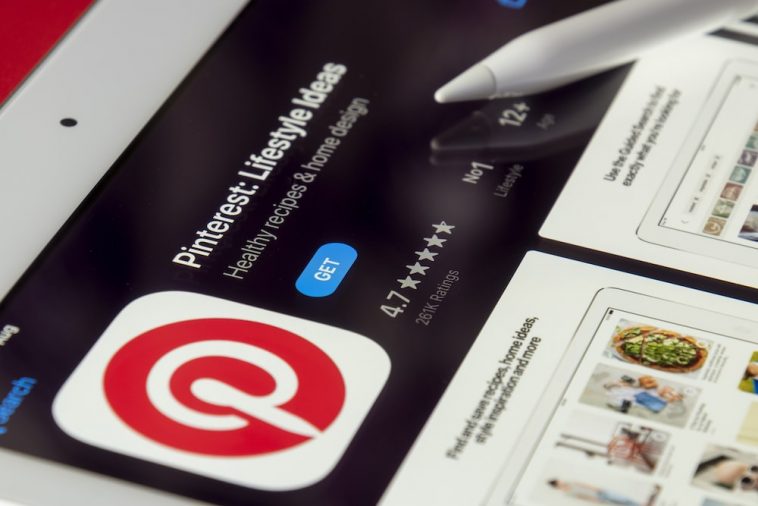Introduction.
Pinterest has become a powerhouse for sharing ideas, inspirations, and yes – even affiliate links. As one of the biggest visual search engines on the internet, Pinterest isn’t just for home décor ideas or recipe collections.
It’s an excellent platform for affiliate marketers to share products and recommendations in a way that feels genuine and helpful.
The potential reach on Pinterest is huge, with over 450 million monthly active users, and the best part is that people on Pinterest are there to shop, find ideas, and explore products.
If you’re looking to share affiliate links on Pinterest, this guide covers everything from setting up a Pinterest account to crafting engaging pins that don’t feel like spam.
Let’s get started with the basics, move through to some strategies, and then wrap up with tips on measuring your success.
By the end, you’ll have a clear idea of how to leverage Pinterest for your affiliate marketing efforts in an authentic way.
Setting Up Your Pinterest Account for Affiliate Marketing
Before promoting any affiliate links, it’s essential to set up your Pinterest account in a way that aligns with your goals. Here are the steps:
- Switch to a Pinterest Business Account
If you haven’t already, switch your personal account to a business account. This will allow you to access Pinterest Analytics, create promoted pins, and add more detailed descriptions. Plus, it’s free, so there’s no reason not to make the switch. - Claim Your Website
By claiming your website, you increase the authority of your Pinterest account and gain access to insights on how your website content performs on Pinterest. This helps drive more credibility to your profile, which is important for any affiliate marketer. - Optimize Your Profile
Choose a clear profile picture and write a bio that lets people know what kind of content to expect. Think of it as your Pinterest “about me” section. Keep it short and focused on your niche. - Enable Rich Pins
Rich Pins provide more details about the pin’s content, pulling data directly from your website. This is especially useful for affiliate links since it offers context, making it more likely users will click.
Choosing and Organizing Affiliate Content
Once your account is optimized, the next step is figuring out what to promote. Here are some ideas for choosing the right affiliate content:
- Stick to Your Niche
If you’re focused on a particular niche like health and wellness, fashion, or tech, make sure your pins reflect that. Niche-specific content tends to perform better because it speaks directly to a particular audience. - Be Selective with Products
Only promote products or services you trust. Pinterest users can be wary of promotional content, so focus on sharing things you genuinely believe in. When you’re selective with products, your pins come across as more trustworthy and authentic. - Plan Seasonal and Evergreen Content
Mix up your pins with seasonal content (like holiday gift guides) and evergreen content that stays relevant all year round. Seasonal pins can boost traffic temporarily, while evergreen pins can continue driving clicks long after they’re published.
How Do I Create Pins That Attract Clicks?
The visual appeal of a pin is what makes people click, so designing eye-catching and informative pins is crucial. Here are some tips for creating engaging pins:
- Use High-Quality Images
Clear, high-quality images stand out on Pinterest, where aesthetics are a big part of the platform. Use photos that represent the product well and show it in a real-life context whenever possible. - Add Text Overlays
If the product or service you’re promoting isn’t immediately recognizable from the image alone, consider adding a short text overlay. Keep it simple – a few words that describe what the product does or its main benefit. - Include Descriptive Keywords in Pin Descriptions
Pinterest is a search engine, so using relevant keywords in your pin descriptions helps your pins show up in search results. Write a short, engaging description that also includes keywords related to the product or niche. - Design Vertical Pins
Vertical pins (usually 2:3 aspect ratio) perform best on Pinterest since they’re easier to see when scrolling. Canva is a great tool for designing Pinterest graphics if you’re not a designer. Aim to make the pin easy to read and visually appealing. - Create Multiple Pins for the Same Link
Don’t be afraid to create different versions of a pin for the same affiliate link. You might want to test different images, color schemes, or text to see what resonates best with your audience.
Making Your Affiliate Links Compliant with Pinterest’s Policies
Pinterest allows affiliate links, but it’s essential to follow their guidelines to ensure your pins stay up. Here are some best practices:
- Disclose Affiliate Links
Transparency is key, so always mention that a pin contains an affiliate link. You can do this by adding “#affiliate” in the pin description. This builds trust and ensures compliance with both Pinterest’s and FTC guidelines. - Avoid Over-Promoting
Be careful not to flood your account with only affiliate links. Mix in non-promotional content or links to your blog posts or free resources to keep your profile balanced and engaging. - Link to a Blog Post (Optional)
Some marketers prefer linking pins to a blog post or landing page that contains affiliate links instead of direct links. This allows you to provide more context about the product, which can increase conversions.
Growing Your Pinterest Following for More Affiliate Clicks
Getting clicks on your affiliate pins is easier with a following, so here are some ways to grow your audience:
- Pin Regularly
Pinterest rewards consistency, so aim to pin every day. This keeps your content fresh and helps it reach more people. You can use a scheduler like Tailwind to set up pins in advance. - Join Pinterest Group Boards and Tailwind Tribes
Group boards and Tailwind Tribes can increase the reach of your pins. Look for boards in your niche where your pins would fit in naturally, and make sure to follow the rules of each board. - Engage with Other Pinners
Interacting with other users can increase your visibility. Comment on pins in your niche, follow accounts with similar interests, and save others’ content to show Pinterest that you’re an active participant on the platform.
Tracking Your Success with Pinterest Analytics
After you’ve been pinning for a while, take some time to analyze what’s working and what isn’t. Here’s how to measure your affiliate marketing performance on Pinterest:
- Check Impressions, Saves, and Clicks
Impressions show how many people are seeing your pins, while saves and clicks indicate engagement. Pins with high impressions but low clicks might need better descriptions, while those with high clicks can serve as inspiration for future content. - Look at Link Clicks on Affiliate Pins
Link clicks are a direct measure of how many people are clicking through to your affiliate products. Pay attention to which pins drive the most clicks, and see if you can find common patterns in design or topics. - Adjust Your Strategy Based on Insights
Pinterest trends can shift quickly, so stay flexible. If a particular style of pin isn’t performing well, switch things up. Similarly, if you notice a certain product or type of content getting lots of clicks, double down on that approach.
Frequently Asked Questions
1. Can I make money promoting affiliate links on Pinterest?
Yes, many marketers make money by promoting affiliate links on Pinterest. Since Pinterest users are often looking to make purchases, it’s a good platform for affiliate marketing.
2. Do I need a website to promote affiliate links on Pinterest?
No, you can link directly to affiliate products. However, some marketers prefer linking to their own blog posts to offer more context.
3. How often should I pin my affiliate links?
Aim to pin regularly, but don’t go overboard. A balanced approach works best, where you share both affiliate and non-affiliate content.
4. Can I use Amazon affiliate links on Pinterest?
Amazon’s affiliate terms sometimes change, so it’s best to check Amazon’s rules for social media sharing. Some marketers link to a blog post with Amazon affiliate links rather than posting Amazon links directly.
Wrapping It Up
Pinterest is a great place to promote affiliate links in a way that feels natural and helpful to users. By setting up your account properly, sharing high-quality content, and engaging with others on the platform, you can create a successful affiliate strategy that doesn’t feel pushy. Now that you have a strategy, what’s the first product you’ll start promoting on Pinterest?





GIPHY App Key not set. Please check settings